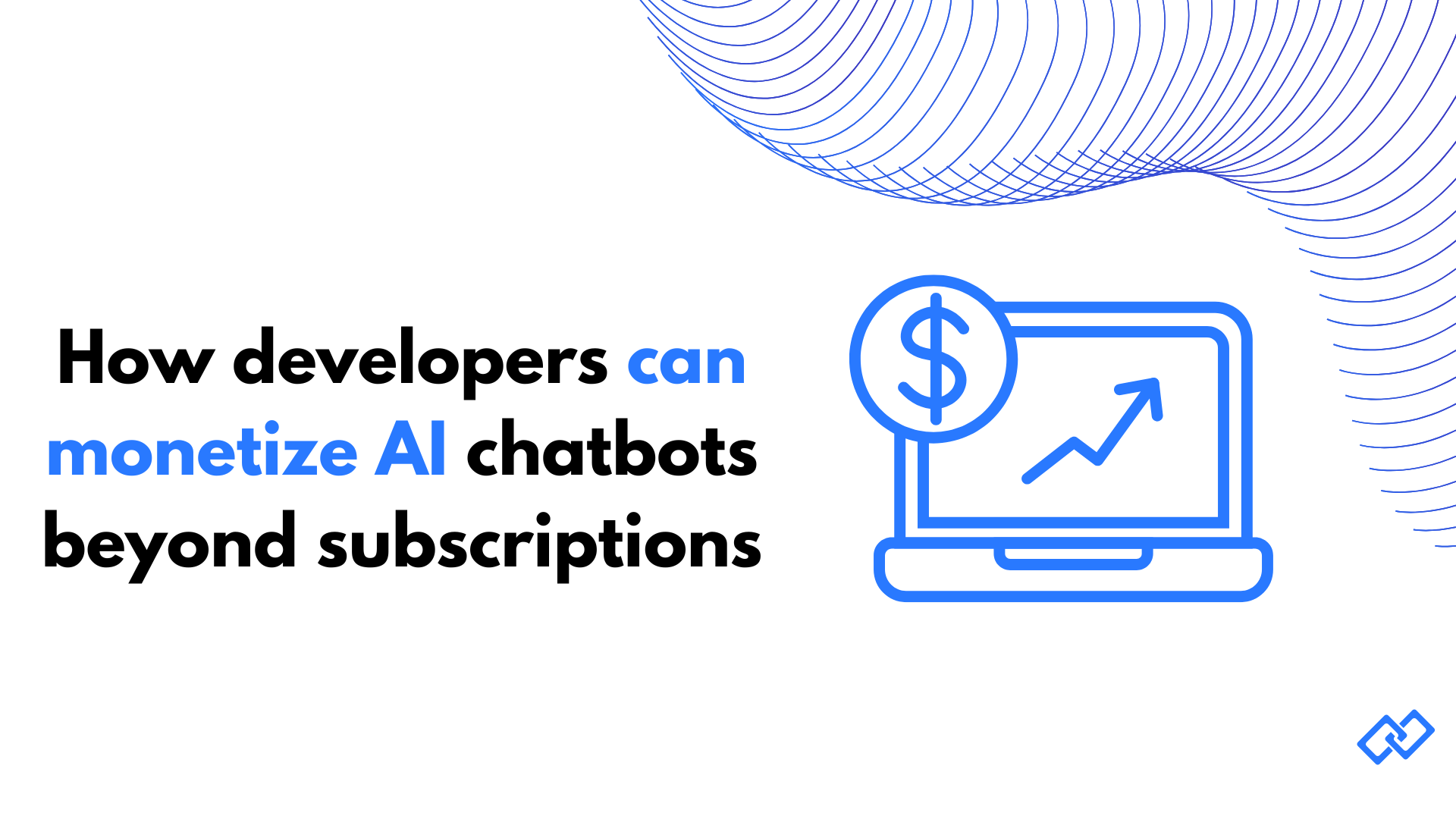How Developers Can Monetize AI Chatbots Beyond Subscriptions

AI chatbots have exploded in popularity since 2023. Frameworks like LangChain, Rasa, and Botpress make it easier than ever to create niche assistants — from travel planners to productivity tools.
But there's one persistent question every developer asks:
How do you make money from a chatbot?
The default answer has been subscriptions. Charge users $5, $10, or $20 per month for premium access. While this works for some products, it's a tough model for most indie developers:
- Users hesitate to add another monthly subscription.
- The market is crowded with free alternatives.
- Running LLMs costs real money (OpenAI API pricing shows just how quickly usage fees add up).
Good news? Subscriptions are not the only option. In this article, we'll explore five monetization models beyond subscriptions, with practical examples and developer-friendly insights.
1. Usage-Based Pricing (API Metering)
Instead of charging a flat monthly fee, you bill users based on how much they use the chatbot.
Pros: aligns cost with value; heavy users pay more.
Cons: users may be afraid of "metered" bills; requires careful monitoring.
Example: A legal research chatbot could give 10 free queries per month, then charge per additional request.
👉 See how Stripe Billing supports usage-based pricing for SaaS and apps.
2. One-Time Purchases & Lifetime Deals
Not everyone loves subscriptions. Some users prefer a one-time payment for lifetime access.
Pros: easier sell for niche tools; strong initial cash flow.
Cons: no recurring revenue; long-term support can be costly.
Example: A study-aid chatbot could sell a $49 lifetime access package to students.
Pro tip: Developers often test this model on AppSumo, a marketplace for lifetime software deals.
3. Affiliate & Referral Partnerships
One of the easiest ways to monetize chatbots: recommend products and get paid for referrals.
Pros:
- Easy business setup: joining affiliate programs like Amazon Associates or Booking.com Affiliates takes minutes.
- Natural fit: if your chatbot already answers "what's the best X?" questions.
Cons:
- Revenue per user can be low compared to subscriptions.
- Brand safety risks if affiliates promote products that don't match your audience.
- Technically tricky: injecting affiliate links into LLM output without breaking the conversational flow or user trust requires careful prompt engineering or post-processing.
Examples:
- A travel chatbot suggests hotels and attaches a sponsored affiliate link.
- A finance chatbot points users to budgeting apps with referral rewards.
👉 Business-wise, affiliates are simple. Developer-wise, implementation requires finesse to feel natural and transparent.
4. In-App Purchases & Premium Features
Offer a free baseline chatbot, then upsell:
- Extra tools (integrations, APIs).
- Faster responses.
- Exclusive datasets.
Pros: free tier attracts users; revenue from power users.
Cons: balancing what to give for free vs. paid can be tricky.
Example: A health coaching chatbot offers free daily tips, but charges $4.99 for a personalized 30-day diet plan.
This model mirrors mobile apps. Both Apple In-App Purchases and Google Play Billing support this approach.
5. Ads in AI Chatbots (The Emerging Model)
The most exciting (and controversial) path: ads embedded inside chatbot conversations.
Why ads?
- Running LLMs is expensive, and ads scale revenue without adding friction.
- Chat queries reveal high intent (e.g., "best CRM for freelancers").
- Ads can be native and contextual: helpful suggestions, not intrusive banners.
How it works:
- Inline: sponsored snippet inside the answer.
- Sidecar: ad card next to the bot's reply.
- Post-answer: sponsored callout after the chatbot responds.
Example: A productivity chatbot suggests project management apps and includes a sponsored recommendation.
👉 Platforms like Adsbind are building this infrastructure so developers can plug in ads easily and monetize without chasing subscriptions.
Comparing Models at a Glance
| Model | Best For | Pros | Cons |
|---|---|---|---|
| Usage-Based Pricing | Niche, high-value apps | Fair to both dev & user | Risk of user bill shock |
| Lifetime Deals | Student / hobby apps | Simple sell, fast cash flow | No recurring revenue |
| Affiliate & Referrals | Product discovery bots | Easy business setup, natural fit | Brand safety risks, hard to integrate smoothly |
| In-App Purchases | Consumer apps | Proven freemium model | Hard to balance free vs. paid |
| Ads in Chatbots | Mass-market apps, free tools | Scalable, frictionless | Requires ad infrastructure |
Which Model Should You Choose?
The right approach depends on:
- Audience size (small niche vs. broad consumer base).
- Problem solved (specialized vs. general).
- Revenue goals (steady cash flow vs. scaling).
For many indie developers, a hybrid model works best. Example:
- Free chatbot with ads to cover costs.
- Premium tier with in-app purchases or usage-based billing.
This way, you capture both casual and power users.
Final Thoughts
Monetizing AI chatbots is still an evolving field. Subscriptions will remain part of the picture — but developers now have a growing set of tools to go beyond them.
- Usage-based pricing fits high-value, specialized tools.
- One-time deals appeal to budget-conscious audiences.
- Affiliate models turn recommendations into revenue, but need careful handling.
- In-app purchases mirror proven mobile success.
- Ads in chatbots unlock scalable monetization without paywalls.
👉 If you're building a chatbot and want to explore ad-based monetization, check out Adsbind — designed to help developers integrate contextual, privacy-safe ads directly into LLM apps.